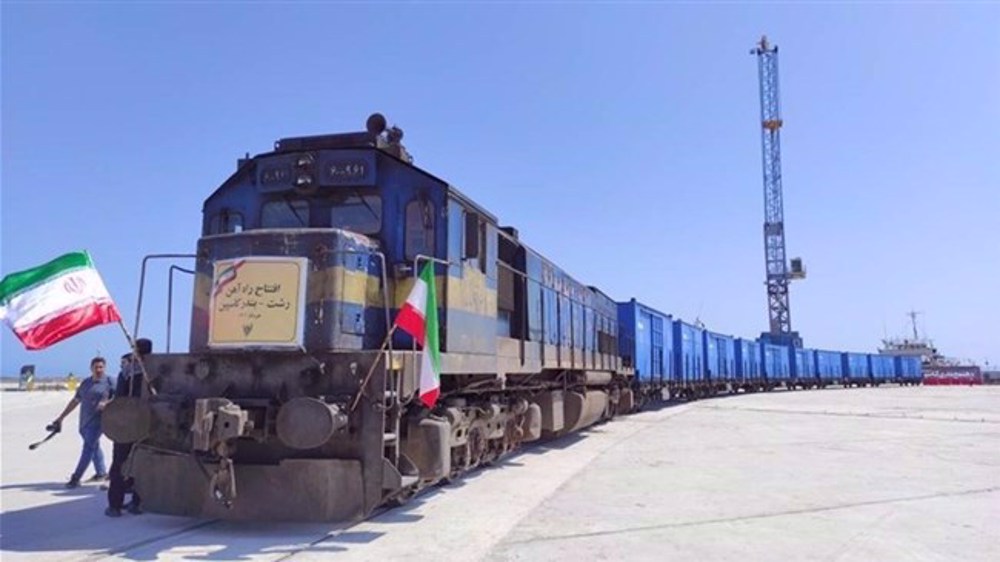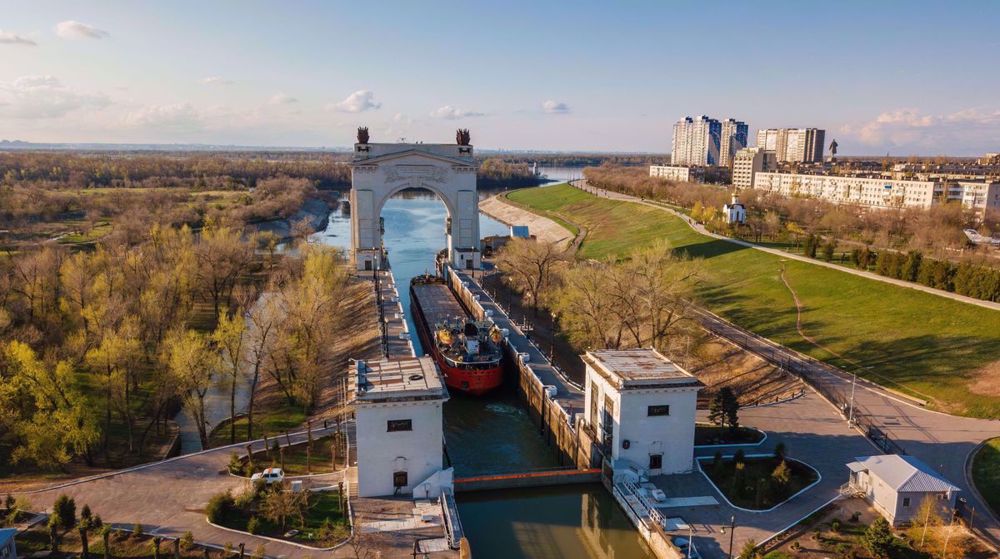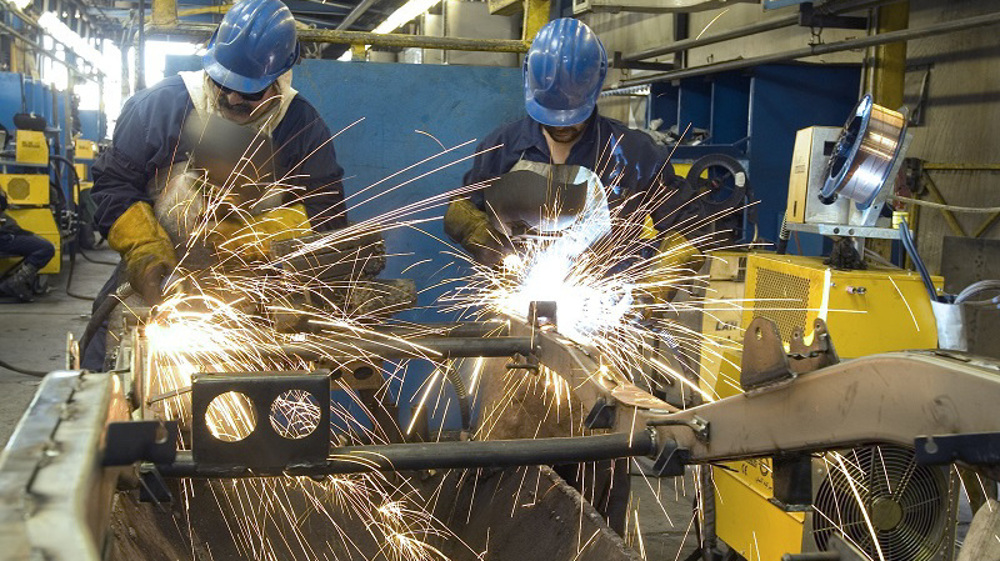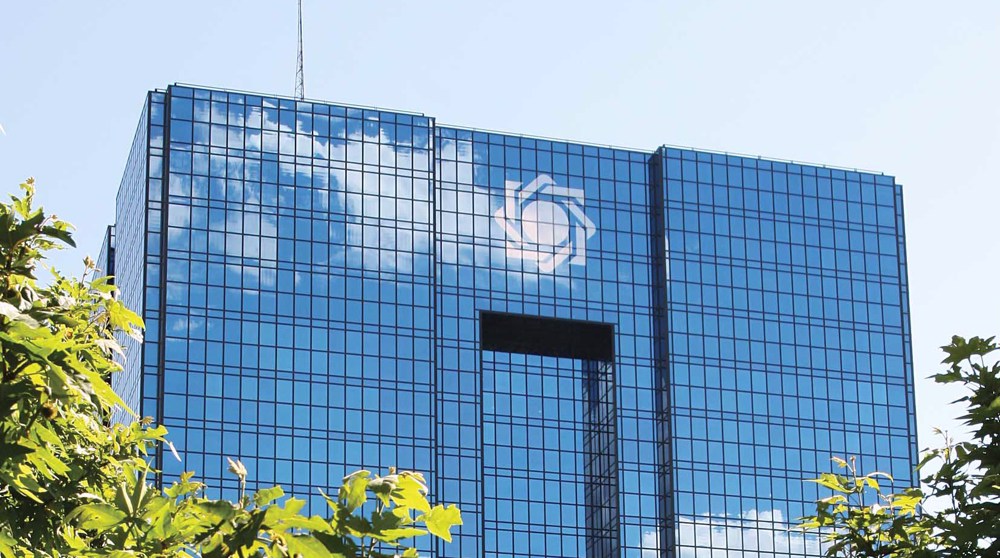Geoeconomic implications of Iran’s Rasht-Caspian railway
Last week, Iran inaugurated the Rasht-Caspian Railway, part of the International North-South Transport Corridor (INSTC) that connects the Persian Gulf to the Caspian Sea by rail.
The 37-kilometer railway, forming the last segment of the INSTC, connects the provincial capital of Rasht to the port of Anzali on the Caspian Sea, expanding Iran’s relations with its northern neighbors namely Russia, Kazakhstan, Azerbaijan and Turkmenistan.
The 7,200-kilometer INSTC integrates a network of rail, ship and road routes to facilitate freight movement across India, Iran, Azerbaijan, Russia, Central Asia, and Europe. It forms a vital link between the Indian Ocean, Persian Gulf, Caspian Sea, and Baltic Sea.
Minister of Roads and Urban Development Mehrdad Bazrpash said at the opening ceremony that the Rasht-Caspian Railway project is an unprecedented event in the history of Iran.
It has a capacity to transport up to 600,000 passengers a year and seven million tonnes of freight, which can be raised to 10 million tonnes.
The project, however, is not merely a piece in a transportation corridor, where trains would ply up and down Iran’s expanse. It is rather a driver of economic activities and a catalyst in the creation of logistics centers and distribution of goods, which will generate added value along the corridor and increase the country’s transit capacity and income.
The Rasht-Caspian Railway is the central branch of the INSTC, the completion of which also puts the eastern branch of the corridor through the Sarkhs-Inche Broon Railway on the border with Turkmenistan into operation.
It leaves only the western and the final branch of the corridor from Rasht to Astara on the border with Azerbaijan to be completed, which requires constructing 162 km of railway.
In May 2023, Russia and Iran inked an agreement to construct the railroad within 48 months. The Russians undertook to provide 1.6 billion euros needed to complete the project. Azerbaijan says it has already completed the route on its side.
The inauguration of the Rasht-Caspian Railway on June 20 was attended by Igor Levitin, the aide to the Russian president, the governor of Russia’s Astarakhan oblast, Igor Babushkin, and Azerbaijan’s deputy Prime Minister Shahin Mustafayev.
Roads Minister Bazrpash touched on late president Ebrahim Raeisi’s special interest in completing transportation projects with Russia, saying he was regularly following their implementation and progress.
The railway, he said, is one of the “strategic” projects between Iran and Russia, which is being carried out at a fast pace.
Russia and Iran are building a new transcontinental trade route that is beyond the reach of any foreign intervention. Both countries are subject to Western sanctions that have prompted them to turn toward each other and look eastward.
The new 3,000–kilometer passage stretches from the eastern edge of Europe to the Indian Ocean, along rivers and railways that are linked by the Caspian Sea.
Iran and Russia are spending billions of dollars to speed up delivery of cargoes through the passage, according to Bloomberg News, with the goal being “to shield commercial links from Western interference and build new ones with the giant and fast–growing economies of Asia”.
At its northern end is the Sea of Azov which President Vladimir Putin has said had become an inland sea for Russia. It is bracketed by the Crimean Peninsula and the mouth of the River Don. From there river, sea and rail networks extend to Iranian hubs on the Caspian Sea and ultimately the Indian Ocean.
In Iran, most development experts and specialists believe that the country’s oil economy is one of the main factors of its underdevelopment.
Over the past few years, alternative options for oil in Iran's economy have received more attention, with the transit network and corridors being given an additional priority.
Proponents of the idea say the expansion of corridors should be taken seriously in order to fill the "oil gap" and improve the country's economic situation.
According to Bazarpash, transit corridors and the network of roads and rails have the capacity to generate as much revenue and wealth as oil. He has spoken of a crash course in the government to expand and upgrade the country’s roads and transportation network.
Nevertheless, what is more important is whether Iran wants to be a mere transit hub for goods, or establish an added-value chain in the country.
Given that Iran's neighbors do not have a very strong economy and are mostly exporters of raw materials, transit per se cannot be effective in reducing dependence on oil revenues.
Iran's geographical location, along with its technological and specialized human resource capacities, allows it to build a transit economy based on added-value chain.
The country can import raw materials from the neighboring countries and convert them into high-value products and then export them through the new corridors. This will create new jobs and improve the country’s position in the international economy.
For example, Central Asia has a large market for pharmaceutical imports. Iran also has a powerful pharmaceutical industry, where it can import raw materials and export medical products to Central Asian countries.
Houthi: US bombs inflame, escalate wars of extermination in West Asia
VIDEO | Press TV's news headlines
UN report says Israel’s methods in Gaza align with ‘genocide’
Attempts to dehumanize Hamas resistance movement doomed to fail
BRICS offers Turkey partner status, says Turkish minister
Over dozen killed as twin Israeli strikes hit Syrian capital, suburb
Trump team drawing up list of Pentagon officers to fire: Sources
IRGC Ground Force disbands terrorist team in southeastern Iran











 This makes it easy to access the Press TV website
This makes it easy to access the Press TV website